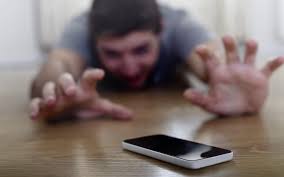It’s time we put our phones down. This not a suggestion to be taken lightly, but a demand of the utmost importance.
People have grown addicted to their cell phones more than they are aware of, and just like any other addiction, this one will be hard to break. Well, in truth, people are not addicted to the phone itself per se, but the applications that live inside, social networking and entertainment, all designed to keep a person trapped in a world of digital vices.
We are trained like Pavlov’s dog to associate a notification bell with a strong urge to check the phone. This leads to instant gratification by the notification regardless of the message. Notifications have individuals feel better about themselves such as receiving likes on a photo, which to many passes as self-validation. The addiction of keeping in touch with everyone in your network and their whereabouts is important to note as it brings a sense of fear of missing out.
According to a study by psychologists Laila Chaudhry & Faye Prichard, “The fear of missing out, a phenomenon that can be found in nearly 75 percent of young adults using social media these days, is linked to constant use of social media . . . This can lead to addiction to social networking sites, and through the medium of mobile apps, to phones also.”
Although cell phone creators have made these devices to addict us to their products, some companies are taking responsibility and giving us the option to limit our usage.
Screen Time is Apple’s newest setting in iOS 12, in response of the phone addiction claims, where the user can put a limit on their screen time of the applications they are using. This is a way to control how users allocate their time on the phone if and when they find the discipline to implement the feature in the first place.
Of course, a person can always go back and change the limit, so this setting is actually better suited for children as they would not have access to the passcode of a parent.
Even Apple CEO Tim Cook admits his phone addiction has gotten to him. “I thought I was fairly disciplined about this,” he said, “and I was wrong. When I began to get the data, I found I was spending a lot more time than I should. And the number of times I picked up the phone were too many.”
The Apple Watch is another way to begin breaking phone habits, more specifically when a user is outside, as many individuals are concerned with safety issues when distracted by the phone too much in public.
Of course, having a phone has many perks like GPS, wireless phone calling and simple searches on Google, but the problem these instill can be lessened by carrying an Apple Watch with LTE in place of an Apple phone.
According to Apple-specific news website 9to5Mac, “Experiences without iPhone can include workouts (outdoor workouts or even gym workouts with the iPhone secured in the car or locker), trips to the movie theater or dinner at a restaurant, visits to parks with your family or spending time outdoors on your own, or even an hour spent grocery shopping.”
It is time we start depending on phones a little less and commit to being present in our everyday experiences a lot more. Remember, along with a great tool to stay connected with friends and the environment around, they also run the risk of disengaging us from our own lives.


































